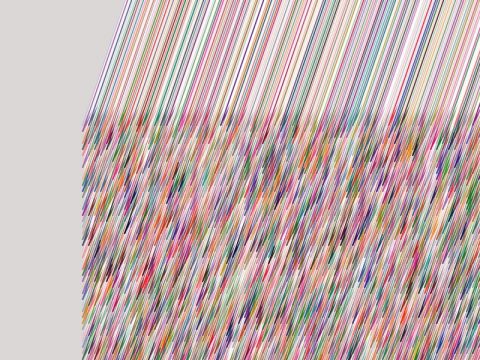At first glance, Molnár’s series Lettres de ma mère was reminiscent of what Agnes Martin had created: systematically repetitive penciled grids. However, deviation soon arose, for the technique of gradualism (minute change in one parameter per iteration) enabled progression towards something chaotic and disoriented, resulted in successful simulations of the artist’s mother’s handwriting. And finally she returned to a classical composition that had achieved both balance and visual satisfaction, which surprisingly, evoked memories of my childhood.
Multicolor ballpoint pens were once a fad in seventh grade. Fellow classmates paraded around and bragged about getting the newest model (4-in-1 pens would get laughs from people who owned a 5-in-1), and we’d draw on paper with all color inks simultaneously locked down. It created an almost kaleidoscope effect that could be either hypnotizing or psychologically soothing. I wasn’t aware that was the first time I had my hands (and eyes) on op art. Thus, in my works, I decided to indulge in nostalgia and recreate those spontaneously doodled color drawings, only this time, with codes.
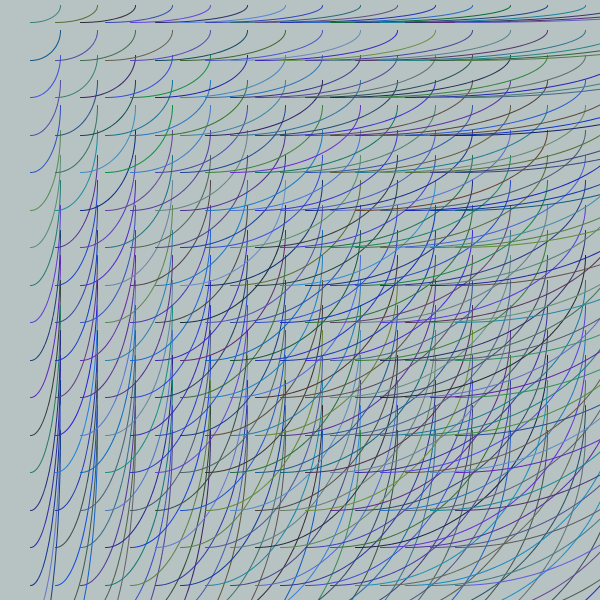
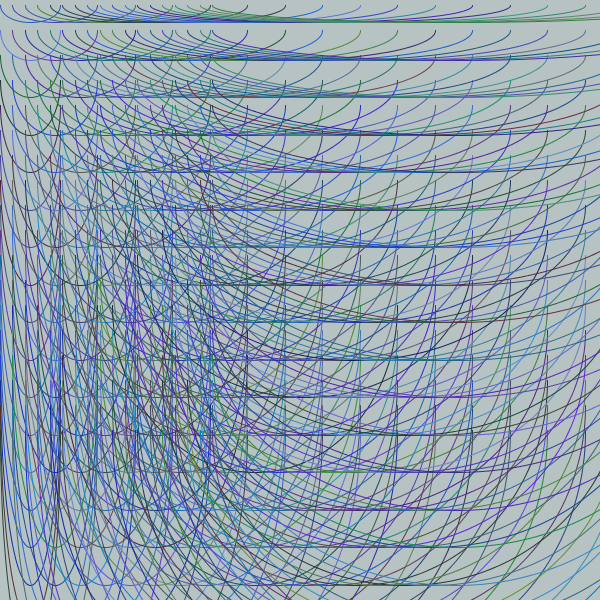
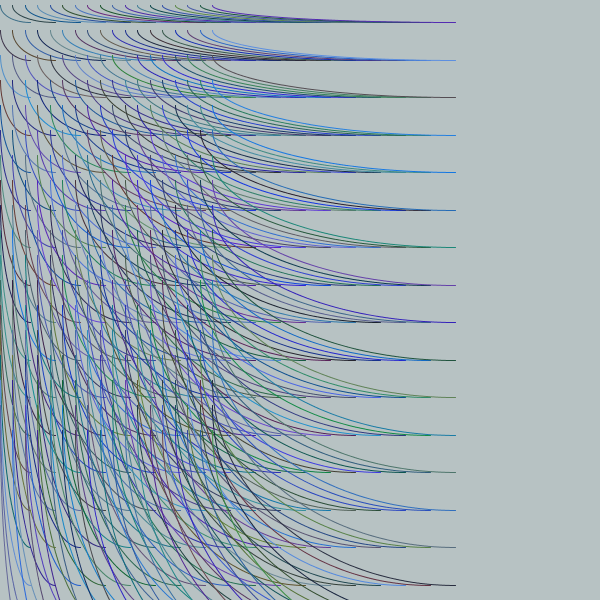
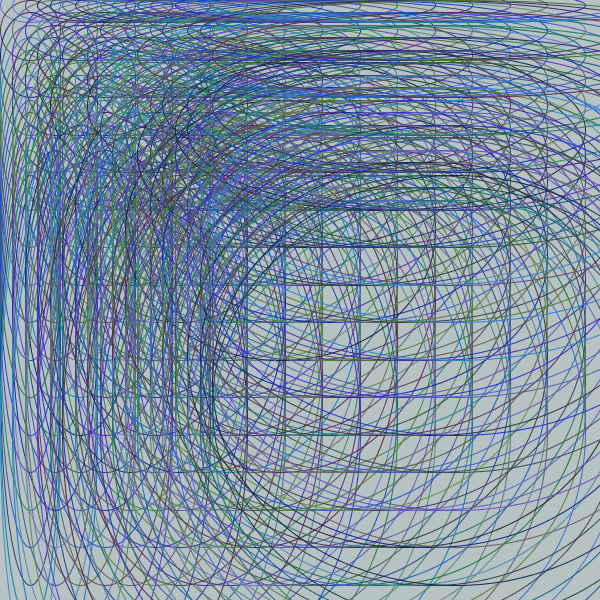


I handpicked five colors that screamed ‘ball pens’ and the ‘first decade of the millennium’. And since I’ve had my fair share of experience working with circles and rectangles, I challenged myself with arc. The first image iterates the drawing of an arc from 0 to half Pi, changing only the radian as it repeats, rolling out on both axis. The rest follows the same pattern: the second image, from 0 to Pi, third, half Pi to Pi, fourth, Pi to 2Pi, and fifth, 0 to 2 Pi. To end the series on a high note, I set the radian to “rando” to showcase the beauty of arbitrariness.
The advent of technology now opens more doors to exert creativity. With the help of repetition done ever so easily, a new way to introduce rhythm/sense of order into oeuvres comes into being. One circle might not be called “art”; ten of them lined up in four rows might be. //Repetition itself does not always eradicate meaning, but instead, enhances the surface by intentionally creating a pattern. Before making this series, I didn’t know exactly what might come out, not only because repetition gives out innumerable results, but also because repetition helps camouflage what I truly want to achieve: a sense of synchronization, and thus, allows a layered conceptual identity.
What appeals to me the most in gradualism is the “butterfly effect” it presents. It is not trying to be the exactly same over and over again. It asks the question “how much of a change counts as change” and moves the conversation about control variables in art forward. Reiteration takes on meanings as it is no longer a static function, but rather, an embodiment of the trial and error methodology, which in traditional art, is nowhere to be found. Monet may be able to replicate a stroke, but there’s no way that he can replicate a certain chiaroscuro setting. However, with coding, all of the above becomes possible in a reductive form, and that alone, I believe, deserves to be treated as art.

